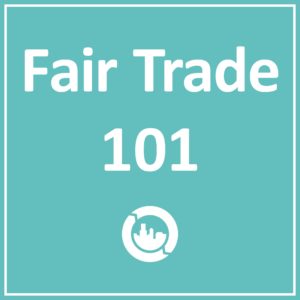The Coffee Struggle
When I asked Mario what he would want consumers in the United States to know about coffee farmers and why it is important to buy Fair Trade Certified, his answer surprised me. That is, until I walked the path through his coffee farm.
Santos Mario Tórres is the Chairman of the Board of PRODECOOP, a second level coffee cooperative representing 39 local level farming cooperatives comprised of over 2,300 small farmers across northern Nicaragua. Mario was elected to PRODECOOP’s general assembly from his local coop and from there voted to the Board of Directors.
As we sat and talked in the main room of his home in the mountains of San Lucas Mario did not respond with an answer about how Fair Trade premiums saved their cooperative when Hurricane Mitch wiped out their homes and farms in 1998, nor did he talk about the children from the community who had received scholarships for high school and college from those same premiums. Mario’s immediate response when asked what we should know as consumers about coffee was simply this: Coffee is hard work.
At 4200 feet one would expect a relatively cool climate. While there is certainly a breeze, and plenty of shade, the temperature does not normally drop below 90 degrees. As Mario and a group of farmers who are members of the local cooperative led us on a steep, muddy, hour-long hike into their mountainside coffee fields, I wondered at their ability to navigate these 10-12 inch wide slippery paths. When we asked them if they ever slipped and fell, they said that every one of them has.
We were visiting in July. The coffee cherries were green and small, a far cry from the plump red cherries that they will be during the harvest months of October, November, and December. For now the work in the fields is mostly maintenance. Older plants need to be cut back to stimulate new growth, compost and organic fertilizer spread, and old, dead growth trimmed off and left to enrich the soil. At the lower elevations the crops that the families rely on for sustenance like corn, beans, and rice need to be tended and harvested. Once the season begins though, all hands will be on deck in the coffee fields, hand picking the ripe cherries and loading them into 150 lb sacks. These will be carried down those treacherous paths on the backs of the farmers who were now happily leading us through the mountains.
When we came back down the trail we were tired and sweaty. What for us was a strenuous hike is only the beginning of the coffee process that delivers roasted beans or grounds that we think of as a simple part of our morning routine every day in cities and towns across the USA. From the base of the trail, we followed the route of the coffee to the cooperative’s wet mill. This is a structure consisting of a large concrete basin that feeds into a simple pulping machine. Upon completing their arduous journey down the mountain with these massive sacks of coffee on their backs, the farmers arrive at the mill and dump all of the coffee cherries into the basin.
The pulping machine strips all of the red fruit off of the beans and channels this pulp off to a separate storage area where it is composted and recycled as organic fertilizer for the farm. The beans themselves, now a tan color referred to as “parchment coffee”, are collected and spread out, by hand, on large, concrete drying patios. Here they dry in the sun until they are at around 40% humidity. The beans are then collected and put back into sacks and transported to PRODECOOP’s dry mill for final processing before export.
It is hard to imagine the amount of effort and determination that it takes to be successful enough at coffee farming to provide for your family and community. Even as we slipped and struggled up and don the trail and tried to imagine how it would feel to have 150 lbs on our backs it seemed a bit unreal. The farmers we met though sought no pity. They don’t complain or act as though they are owed a thing. What they deserve, however, is equal access to a market that can provide their communities with the opportunity to grow and develop.
They deserve access to the resources that can allow them to advance their craft and increase the demand for their already high quality crops. They deserve equitable pay and a fair return on the backbreaking labor they have borne for generations. These are the opportunities that the Fair Trade system provides access to. As we traveled through the coffee regions of Nicaragua and met more and more coffee farmers in cooperatives like Mario, we were excited to see how each community has seized these opportunities for empowerment and developed new models to advance their communities, and provide new options for themselves and their children.









You must log in to join the discussion. If you are not already a member registering is easy.